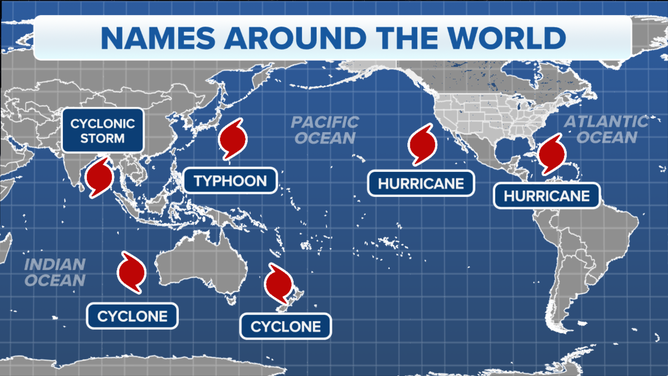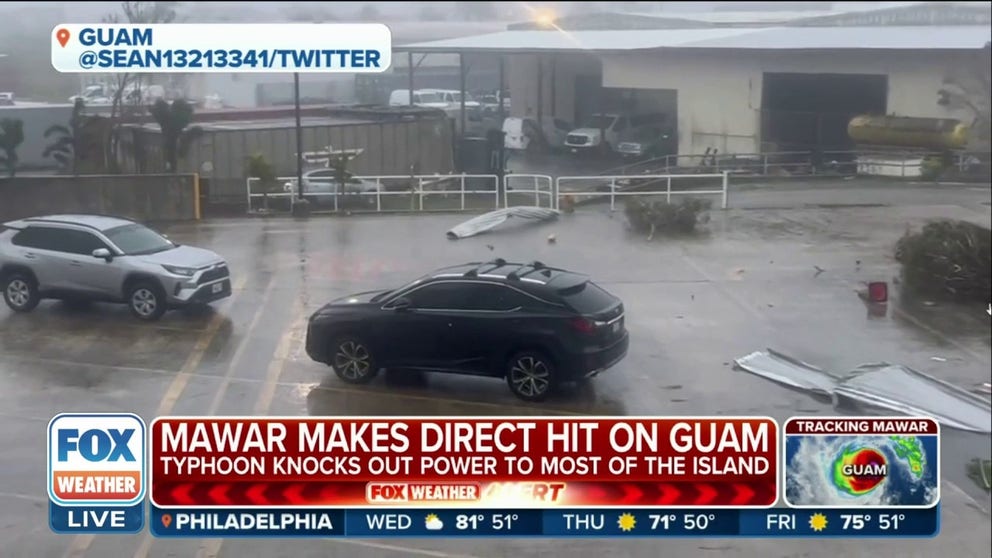What's the difference between a typhoon and a super typhoon?
A typhoon is the hurricane equivalent of a tropical cyclone in the western Pacific. When its maximum sustained winds reach a certain level, the classification name changes to a super typhoon.
Ferocious Typhoon Mawar lashes Guam, direct hit knocks out power to most of US territory
Typhoon Mawar slammed into Guam on Wednesday as destructive winds from the direct hit knocked out power to most of the island.
A typhoon is the hurricane equivalent of a tropical cyclone in the western Pacific, with maximum sustained winds reaching 74 mph.
When those winds reach 150 mph or higher, the storm is known as a super typhoon, according to the U.S.'s Joint Typhoon Warning Center (JTWC) headquartered in Pearl Harbor, Hawaii. That’s the equivalent of a high-end Category 4 or Category 5 hurricane on the Saffir-Simpson Hurricane Wind Scale.
HOW ARE HURRICANES RATED? THE SAFFIR-SIMPSON HURRICANE WIND SCALE EXPLAINED

Map showing the different names used for tropical cyclones around the world.
(FOX Weather)
The last typhoon to affect a U.S. territory was Mawar in 2023 when it passed through Guam.
The JTWC monitors the Western Pacific Basin to help protect U.S. military bases jointly operated with other countries, as well as any military ships or aircraft that might be in harm’s way.
5 DIFFERENT NAMES FOR HURRICANES AROUND THE WORLD
Depending on where the typhoon is located in the basin, they can be monitored by the China Meteorological Administration, the Hong Kong Observatory, the Japan Meteorological Agency or PAGASA in the Philippines.
